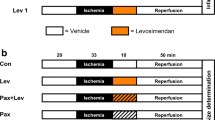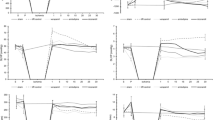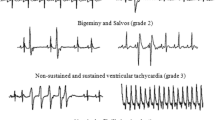Abstract
Purpose
Activation of mitochondrial large-conductance Ca2+-sensitive potassium (mBKCa)-channels is a crucial step for cardioprotection by preconditioning. Whether activation of these channels is involved in levosimendan-induced preconditioning is unknown. We investigated if cardioprotection by levosimendan requires activation of mBKCa-channels in the rat heart in vitro.
Methods
In a prospective blinded experimental laboratory investigation, hearts of male Wistar rats were randomized and placed on a Langendorff system, perfused with Krebs-Henseleit buffer at a constant pressure of 80 mmHg. All hearts were subjected to 33 min of global ischemia and 60 min of reperfusion. Before ischemia, hearts were perfused with different concentrations of levosimendan (0.03–1 μM) for determination of a dose-effect curve. In a second set of experiments, 0.3 μM levosimendan was administered in combination with the mBKCa-channel inhibitor paxilline (1 μM). Infarct size was determined by TTC staining.
Results
In control, animal’s infarct size was 58 ± 7%. Levosimendan at a concentration of 0.3 μM reduced infarct size to 30 ± 7% (P < 0.05 vs. control). Higher concentrations with 1 μM levosimendan did not confer stronger protection. Paxilline completely blocked levosimendan-induced cardioprotection while paxilline alone had no effect on infarct size.
Conclusions
This study shows that activation of mBKCa-channels plays a pivotal role in levosimendan-induced preconditioning.



Similar content being viewed by others
References
Murry CE, Jennings RB, Reimer KA. Preconditioning with ischemia: a delay of lethal cell injury in ischemic myocardium. Circulation. 1986;74(5):1124–36.
Yellon DM, Alkhulaifi AM, Pugsley WB. Preconditioning the human myocardium. Lancet. 1993;342(8866):276–7.
Santillo E, Migale M, Postacchini D, Balestrini F, Incalzi RA. Cardioprotection by conditioning mimetic drugs. Antiinflamm Antiallergy Agents Med Chem. 2016;15(1):15–30.
Cao CM, Xia Q, Gao Q, Chen M, Wong TM. Calcium-activated Potassium Channel triggers Cardioprotection of ischemic preconditioning. J Pharmacol Exp Ther. 2005;312(2):644–50.
Kinoshita M, Tsutsumi YM, Fukuta K, Kasai A, Tanaka K. Isoflurane-induced postconditioning via mitochondrial calcium-activated potassium channels. J Med Investig. 2016;63(1–2):80–4.
Caimmi PP, Molinari C, Uberti F, Micalizzi E, Valente G, Mary DA, et al. Intracoronary levosimendan prevents myocardial ischemic damages and activates survival signaling through ATP-sensitive potassium channel and nitric oxide. Eur J Cardiothorac Surg. 2011;39(4):59–67.
Papp Z, Edes I, Fruhwald S, De Hert SG, Salmenpera M, Leppikangas H, et al. Levosimendan: molecular mechanisms and clinical implications: consensus of experts on the mechanisms of action of levosimendan. Int J Cardiol. 2012;159(2):82–7.
Huhn R, Heinen A, Weber NC, Schlack W, Preckel B, Hollmann MW. Ischaemic and morphine-induced post-conditioning: impact of mK(ca) channels. Brit J Anaesth. 2010;105(5):589–95.
Behmenburg F, Dorsch M, Huhn R, Mally D, Heinen A, Hollmann MW, et al. Impact of mitochondrial Ca2+-sensitive potassium (mBKCa) channels in sildenafil-induced Cardioprotection in rats. PLoS One. 2015;10(12):e0144737.
Sanchez M, McManus OB. Paxilline inhibition of the alpha-subunit of the high-conductance calcium-activated potassium channel. Neuropharmacology. 1996;35(7):963–8.
Wang X, Fisher PW, Xi L, Kukreja RC. Essential role of mitochondrial Ca2+−activated and ATP-sensitive K+ channels in sildenafil-induced late cardioprotection. J Mol Cell Cardiol. 2008;44(1):105–13.
Zhou Y, Lingle CJ. Paxilline inhibits BK channels by an almost exclusively closed-channel block mechanism. J Gen Physiol. 2014;144(5):415–40.
Frassdorf J, Huhn R, Niersmann C, Weber NC, Schlack W, Preckel B, et al. Morphine induces preconditioning via activation of mitochondrial K(ca) channels. Can J Anaesth. 2010;57(8):767–73.
Brixius K, Reicke S, Schwinger RH. Beneficial effects of the ca(2+) sensitizer levosimendan in human myocardium. Am J Physiol Heart Circ Physiol. 2002;282(1):H131–7.
Virag L, Hala O, Marton A, Varro A, Papp JG. Cardiac electrophysiological effects of levosimendan, a new calcium sensitizer. Gen Pharmacol. 1996;27(3):551–6.
Levin R, Degrange M, Del Mazo C, Tanus E, Porcile R. Preoperative levosimendan decreases mortality and the development of low cardiac output in high-risk patients with severe left ventricular dysfunction undergoing coronary artery bypass grafting with cardiopulmonary bypass. Exp Clin Cardiol. 2012;17(3):125–30.
Papp JG, Pollesello P, Varro AF, Vegh AS. Effect of levosimendan and milrinone on regional myocardial ischemia/reperfusion-induced arrhythmias in dogs. J Cardiovasc Pharmacol Ther. 2006;11(2):129–35.
Lepran I, Pollesello P, Vajda S, Varro A, Papp JG. Preconditioning effects of levosimendan in a rabbit cardiac ischemia-reperfusion model. J Cardiovasc Pharmacol. 2006;48(4):148–52.
Xu W, Liu Y, Wang S, McDonald T, Van Eyk JE, Sidor A, et al. Cytoprotective role of Ca2+− activated K+ channels in the cardiac inner mitochondrial membrane. Science. 2002;298(5595):1029–33.
Kukreja RC, Salloum FN, Das A, Koka S, Ockaili RA, Xi L. Emerging new uses of phosphodiesterase-5 inhibitors in cardiovascular diseases. Exp Clin Cardiol. 2011;16(4):30–5.
Shieh CC, Coghlan M, Sullivan JP, Gopalakrishnan M. Potassium channels: molecular defects, diseases, and therapeutic opportunities. Pharmacol Rev. 2000;52(4):557–94.
Hu H, Shao LR, Chavoshy S, Gu N, Trieb M, Behrens R, et al. Presynaptic Ca2+−activated K+ channels in glutamatergic hippocampal terminals and their role in spike repolarization and regulation of transmitter release. J Neurosci. 2001;21(24):9585–97.
Aggarwal S, Randhawa PK, Singh N, Jaggi AS. Role of ATP-sensitive potassium channels in remote ischemic preconditioning induced tissue protection. J Cardiovasc Pharmacol Ther. 2017;22(5):467–75.
Yokoshiki H, Katsube Y, Sunagawa M, Sperelakis N. The novel calcium sensitizer levosimendan activates the ATP-sensitive K+ channel in rat ventricular cells. J Pharmacol Exp Ther. 1997;283(1):375–83.
Kaheinen P, Pollesello P, Levijoki J, Haikala H. Levosimendan increases diastolic coronary flow in isolated Guinea-pig heart by opening ATP-sensitive potassium channels. J Cardiovasc Pharmacol. 2001;37(4):367–74.
Lange M, Redel A, Smul TM, Lotz C, Nefzger T, Stumpner J, et al. Desflurane-induced preconditioning has a threshold that is lowered by repetitive application and is mediated by beta 2-adrenergic receptors. J Cardiothorac Vasc Anesth. 2009;23(5):607–13.
Smul TM, Stumpner J, Blomeyer C, Lotz C, Redel A, Lange M, et al. Propofol inhibits desflurane-induced preconditioning in rabbits. J Cardiothorac Vasc Anesth. 2011;25(2):276–81.
Thornton JD, Thornton CS, Sterling DL, Downey JM. Blockade of ATP-sensitive potassium channels increases infarct size but does not prevent preconditioning in rabbit hearts. Circ Res. 1993;72(1):44–9.
Schulman D, Latchman DS, Yellon DM. Effect of aging on the ability of preconditioning to protect rat hearts from ischemia-reperfusion injury. Am J Physiol Heart Circ Physiol. 2001;281:H1630–H6.
Ferdinandy P, Schulz R, Baxter GF. Interaction of cardiovascular risk factors with myocardial ischemia/reperfusion injury, preconditioning, and postconditioning. Pharmacol Rev. 2007;59(4):418–58.
Heinen A, Strothoff M, Schmidt A, Stracke N, Behmenburg F, Bauer I, et al. Pharmacological options to protect the aged heart from ischemia and reperfusion injury by targeting the PKA-BK(ca) signaling pathway. Exp Gerontol. 2014;56:99–105.
Mio Y, Bienengraeber MW, Marinovic J, Gutterman DD, Rakic M, Bosnjak ZJ, et al. Age-related attenuation of isoflurane preconditioning in human atrial cardiomyocytes: roles for mitochondrial respiration and sarcolemmal adenosine triphosphate-sensitive potassium channel activity. Anesthesiology. 2008;108(4):612–20.
Huhn R, Weber NC, Preckel B, Schlack W, Bauer I, Hollmann MW, et al. Age-related loss of cardiac preconditioning: impact of protein kinase a. Exp Gerontol. 2012;47(1):116–21.
Galagudza MM, Nekrasova MK, Syrenskii AV, Nifontov EM. Resistance of the myocardium to ischemia and the efficacy of ischemic preconditioning in experimental diabetes mellitus. Neurosci Behav Physiol. 2007;37(5):489–93.
Kristiansen SB, Lofgren B, Stottrup NB, Khatir D, Nielsen-Kudsk JE, Nielsen TT, et al. Ischaemic preconditioning does not protect the heart in obese and lean animal models of type 2 diabetes. Diabetologia. 2004;47(10):1716–21.
Matsumoto S, Cho S, Tosaka S, Higashijima U, Maekawa T, Hara T, et al. Hyperglycemia raises the threshold of levosimendan- but not milrinone-induced postconditioning in rat hearts. Cardiovasc Diabetol. 2012;11:4.
Funding
This study was supported by institutional and departmental sources.
Author information
Authors and Affiliations
Corresponding author
Ethics declarations
Conflict of Interest
The authors declare that they have no conflict of interest.
Ethical Approval
All applicable international, national, and/or institutional guidelines for the care and use of animals were followed.
Informed Consent
Informed consent was obtained from all individual participants included in the study.
Rights and permissions
About this article
Cite this article
Bunte, S., Behmenburg, F., Bongartz, A. et al. Preconditioning by Levosimendan is Mediated by Activation of Mitochondrial Ca2+-Sensitive Potassium (mBKCa) Channels. Cardiovasc Drugs Ther 32, 427–434 (2018). https://doi.org/10.1007/s10557-018-6819-5
Published:
Issue Date:
DOI: https://doi.org/10.1007/s10557-018-6819-5




